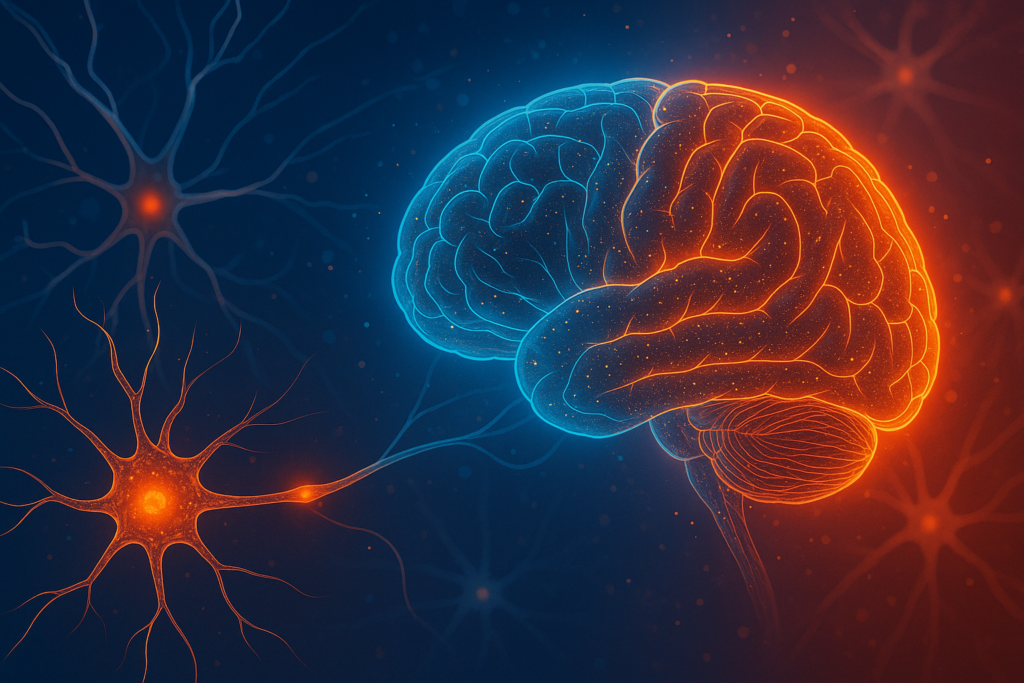For decades, the subconscious mind has been viewed as a mysterious force shaping our behavior, habits, and beliefs. But today, neuroscience is shedding light on how the brain truly works—and how it can be rewired with precision.
Mental reprogramming is not pseudoscience. It’s deeply rooted in the science of neuroplasticity, brainwave states, and the way neural pathways form and evolve. In this article, we’ll explore what neuroscience reveals about changing mental patterns and how you can apply these insights to transform your life.
The Brain Is Designed to Adapt
The concept of neuroplasticity refers to the brain’s ability to reorganize itself by forming new neural connections. This means that with the right stimulation and repetition, you can literally rewire how you think, feel, and behave.
Key principles of neuroplasticity include:
- Use it or lose it: Neural pathways that aren’t used tend to weaken over time.
- Fire together, wire together: When two neurons frequently activate together (e.g., thought + emotion), they form stronger connections.
- Repetition creates permanence: The more you repeat a thought or behavior, the deeper it embeds into your neural network.
This is why habits and beliefs—whether empowering or limiting—become automatic over time.
How Mental Programming Happens
Mental programming occurs largely during childhood, when the brain is highly plastic and absorbent. During this period, the subconscious mind acts like a sponge, absorbing emotional patterns, social norms, and familial beliefs.
Most of this programming happens in theta brainwave states—which are predominant in early life and in deep meditation today.
These programs may help us survive, but many become outdated or harmful in adulthood. Reprogramming the mind involves intentionally accessing those same neural layers and reshaping them.
Brainwave States and Their Role
The brain operates in different frequency states, each linked to a unique level of consciousness:
- Beta (12–30 Hz): Alert, problem-solving, anxiety
- Alpha (8–12 Hz): Relaxed, present, creative
- Theta (4–8 Hz): Dreamlike, subconscious access, healing
- Delta (0.5–4 Hz): Deep sleep, regeneration
- Gamma (30–100 Hz): Insight, high-level cognitive processing
Theta and Alpha states are especially powerful for reprogramming. Techniques like sound therapy, guided meditation, and breathwork help shift your brain into these states, opening the door to deep subconscious change.
The Neuroscience of Thought Patterns
Every time you think a thought, electrical signals fire between neurons. If you think the same thought repeatedly—like “I’m not good enough”—those signals carve stronger neural pathways. This becomes your default thinking pattern.
From a neuroscience perspective, you’re not “stuck”—you’re just following well-worn mental trails. To change, you need to stop reinforcing those old patterns and start practicing new ones.
It’s like building a new hiking trail in your brain.
Tools to Rewire the Brain
1. Sound Frequency Therapy
Sound therapy uses frequencies that resonate with specific brainwave states. For example:
- Alpha induction (relaxation): 10 Hz
- Theta access (subconscious): 5 Hz
- Delta stimulation (healing): 2 Hz
Listening to binaural beats or Solfeggio tones helps shift your mental state, creating fertile ground for new beliefs to take root.
2. Visualization and Mental Rehearsal
Studies show that visualizing a behavior activates the same neural circuits as performing it. Olympic athletes use this to improve performance. You can use it to build confidence, overcome fear, or rehearse positive habits.
3. Reframing and Affirmations
Repeating affirmations like “I am worthy of success” works not because of magic, but because it creates new neural circuits. Pairing these affirmations with emotion and frequency enhances the effect.
4. A.V.E.® and R.A.E.® Techniques
These proprietary methods combine neuroscience, frequency alignment, and positive psychology:
- A.V.E.® guides your brain into reprogrammable states using sound, breath, and affirmations
- R.A.E.® uses strategic emotional release, visualization, and vibrational tuning to rewrite deep-seated patterns
Both techniques are grounded in the understanding that the brain responds to rhythm, repetition, and emotional salience.
Emotional Memory and the Brain
Emotions create powerful neural imprints. If a belief was formed in a traumatic or intense emotional moment, it tends to stick.
To reprogram that belief, you must access it in a similarly heightened emotional state—either through meditation, sound vibration, or deep introspection. This creates a “window” where the brain is more receptive to change.
Consistency Is the Key
Neuroscience emphasizes that change doesn’t happen in a day. But it does happen.
Creating new patterns takes:
- Repetition: Daily practice strengthens new neural pathways
- Emotion: Feeling the new belief reinforces its importance
- Attention: Focused intention activates the brain’s plastic potential
The Future of Mental Transformation
We now know that lasting change is not just about willpower—it’s about understanding how the brain works and aligning with its natural processes.
Sound therapy, neuro-based techniques like A.V.E.®, and conscious thought design are the future of personal growth. They are backed by neuroscience, grounded in practice, and available to anyone willing to engage consistently.
You Can Reprogram Your Mind—And Your Life
Your brain is not fixed. It’s alive, adaptable, and ready to change. With intention, science-backed tools, and regular practice, you can break old thought patterns, heal emotional wounds, and build a brain that works for you, not against you.
The power to rewire your reality is already inside you. Neuroscience just shows you how to access it.
